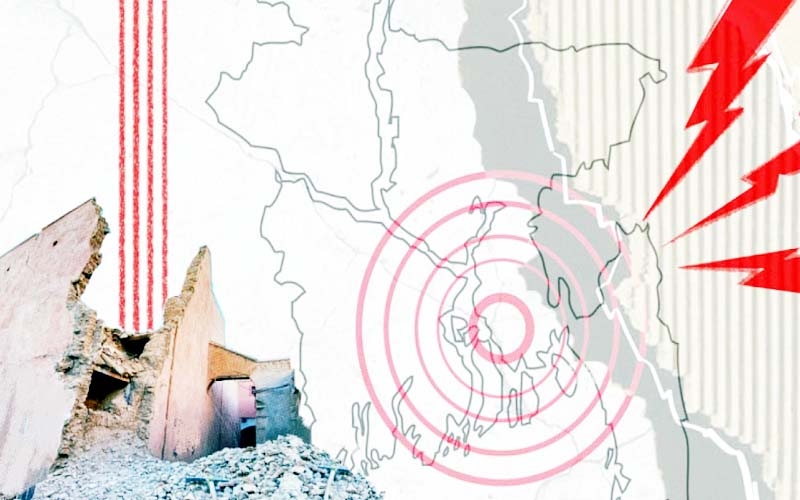- CA Yunus pays homage to Liberation War martyrs on Victory Day |
- Bangladesh capital market extends losing streak for second day |
- Bangladesh celebrates Victory Day Tuesday |
- 'Different govts presented history based on their own ideologies': JU VC |
Dhaka at High Risk of Major Earthquake: Experts Warn

Dhaka faces a significant risk of a major earthquake, with over a century having passed since the last tremor struck Bangladesh in 1918.
As one of the most densely populated cities globally, Dhaka remains critically unprepared for such a disaster, experts have warned.
Geological and Structural Vulnerabilities
Rubyet Kabir, meteorologist and deputy project director of the Bangladesh Weather and Climate Services Regional Project, highlighted Dhaka’s heightened vulnerability due to its geological location and extensive human and economic exposure.
“Dhaka ranks at the top of the Earthquake Disaster Risk Index among the 20 most vulnerable cities worldwide,” Kabir said.
Bangladesh sits at the intersection of three tectonic plates—the Indian, Eurasian, and Burmese—making the country highly susceptible to seismic activity, according to a report by the Earth Observatory Center.
Historical Context and Looming Threat
Experts noted that major earthquakes typically occur every 100 years. The last significant tremors on the Madhupur fault were recorded in 1822 and 1918, placing Bangladesh on the brink of another seismic event.
Despite various projects aimed at mitigating risks in the capital, many initiatives remain incomplete or ineffective, Kabir added.
Potential Impact on Dhaka
A 2009 joint survey by the Integrated Disaster Management Programme and JICA estimated that a 7.0 magnitude earthquake could cause catastrophic damage in Dhaka. The findings projected: 72,000 buildings would collapse, 135,000 buildings would sustain damage and 70 million tons of concrete debris would accumulate.
The Fire Service and Civil Defence also reported that 76% of Dhaka’s roads are too narrow for effective rescue operations, further compounding the challenges.
Unplanned Urbanisation and Risks
Kabir warned that unplanned construction significantly increases the risk. Around 60% of Dhaka’s buildings have been altered from their original designs, making them structurally unsound.
“Many buildings are not designed to withstand high-intensity earthquakes. Gas, electricity, and water line explosions during a tremor could create an even more devastating scenario,” Kabir said.
Current Preparedness and Gaps
Efforts to enhance earthquake preparedness have been limited. While the government has procured some firefighting equipment, broader disaster readiness remains inadequate.
Rajuk’s Urban Resilience Project aims to assess the earthquake resistance of key government offices, schools, and hospitals. However, the project covers only a fraction of the city’s infrastructure.
Call for Proactive Measures
Kabir emphasised the need for immediate action to minimise potential casualties and damage.
“The first step is to identify and retrofit vulnerable buildings in densely populated areas to make them earthquake-resistant,” he said.
He also stressed the importance of public awareness and volunteer training to prepare communities for disaster response.
“While we cannot prevent earthquakes, we can significantly reduce their impact through proper preparation,” Kabir concluded.

